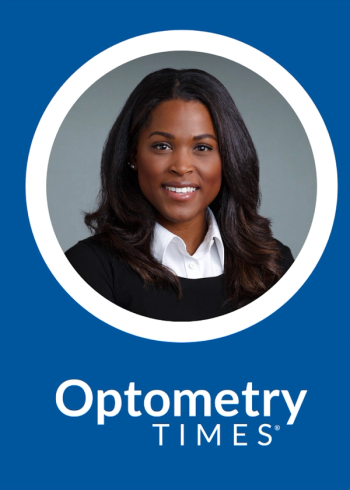
- March digital edition 2021
- Volume 13
- Issue 3
Multifocal lenses for presbyopia in eyes with previous corneal surgery
Novel corneo-scleral contact lens offers visual rehabilitation in irregular corneas
The use of scleral contact lenses has grown significantly in the past year with an associated increase in research.1 This type of lens can be classified as corneo-scleral or fully scleral depending on the presence or absence of corneal bearing.2
One of the main advantages of this option for refractive correction is that the tear reservoir between the posterior surface of the contact lens and the anterior corneal surface allows a significant neutralization of anterior corneal aberrations, which are relevant considering the contribution of this optical surface to the total power of the eye.2
Because these lenses are fitted with minimal or no corneal bear, the fitting process can be simplified in patients with highly irregular anterior corneal profiles.3 For this reason, the use of these contact lenses has been intensively investigated for the correction of irregular astigmatism in post-corneal refractive surgery4,5 and postkeratoplasty corneas6 as well as in ectatic corneal disorders.7,8
Although there is a consensus among practitioners with more than 5 years of scleral lens experience about most aspects of contact lens management,9 some factors require more research, such as the management of multifocality for presbyopia correction.
To date, only the outcomes of conventional soft or rigid gas permeable corneal contact lenses have been evaluated,10,11 despite the availability of some multifocal scleral contact lens designs.
Recently, a new model of multifocal corneo-scleral contact lens has been commercially released, called Presbycustom, which provides the option of customizing not only the fitting parameters to adjust the lens over the cornea and sclera, but also the type of multifocality induced. What follows are the results obtained with this new modality of contact lens in eyes with previous refractive surgery and significant high-order corneal aberrations.
Contact lens design
The Presbycustom contact lens (paflufocon D, Dk 100 Fatt units) is the result of a proof-of-concept research project developed by Laboratorios Lenticon SA in collaboration with the Group of Optics and Visual Perception of the University of Alicante in Spain.12 It is a corneo-scleral contact lens made of highly gas-permeable material.
The lens is customized according to the anterior corneal geometry, the level of ocular high-order aberrations, and the peculiarities of pupil dynamics. It comprises 3 different areas: corneal, limbal, and scleral (Figure 1).
The corneal area has a variable diameter with fixed back-surface asphericity and central anterior surface asphericity that is modified according to the aberrometric induction required. Specifically, the depth of focus achieved with the contact lens is set by customizing the induction of primary and secondary spherical aberration. It has been demonstrated that combining primary and secondary spherical aberrations of opposite sign is significantly more effective for expanding the depth of focus than other aberrometric options.13,14
The scleral area of the contact lens allows a smooth bearing over the sclero-conjunctival surface, facilitating comfortable wearing (Figure 2). The distribution of the tear film below the different areas of the contact lens generates a characteristic fluorogram consisting of central tear pooling with paracentral alignment and significant edge clearing (Figure 3).
Preliminary clinical experience
We recently conducted a prospective pilot study in the Department of Ophthalmology of the Vithas Medimar International Hospital in Alicante, Spain, and in the Optometry Clinic of the University of Alicante. The study included 8 eyes of 8 patients (age 45 to 56 years) with previous LASIK surgery requiring presbyopia correction. All cases had reduced corrected distance visual acuity (CDVA) and significant corneal irregularity.
A complete ocular examination was performed before and 1 month after fitting the customized multifocal scleral contract lens, including visual and refractive analysis, corneal topography, pachymetry and evaluation of corneal and ocular aberrations with the VX120 multidiagnostic system (Luneau Technology, Inc). The contact lens was customized according to the anterior corneal geometry, level of ocular higher-order aberrations and pupil diameter.
The mean corneal radius of the lens fitted was 8.06 ± 0.47 mm; the mean scleral radius was 7.68 ± 0.20 mm. The mean central eccentricity used for the lenses was 0.44 ± 0.33, whereas a fixed posterior eccentricity of 0.63 was used in all contact lenses fitted.
Mean monocular logMAR CDVA changed from 0.21 ± 0.08 with spectacles before fitting to 0.08 ± 0.08 with the contact lens fitted (P=.04). Mean logMAR binocular distance and near visual acuity values with the contact lens were 0.02 ± 0.03 and 0.14 ± 0.11, respectively. Mean logMAR-corrected visual acuities for defocus levels of -0.50 D, -1.00 D, -1.50 D, -2.00 D, and -2.50 D were 0.03 ± 0.06, 0.08 ± 0.08, 0.19 ± 0.17, 0.24 ± 0.10 and 0.31 ± 0.12, respectively (Figure 4).
All patients reported spectacle independence for reading and high levels of contact lens tolerance and satisfaction. No complications were reported during the first year of follow-up.
Conclusion
The selection of an appropriate combination of primary and secondary spherical aberration of opposite sign according to the aberrometric status of the eye can be useful to optimize the depth of focus required for presbyopia correction. This approach can be used to correct presbyopia in irregular corneas with a scleral contact lens.
This pilot study showed that complete visual rehabilitation can be achieved with a customized multifocal scleral lens in presbyopic eyes with previous unsuccessful corneal refractive surgery. These preliminary results should be corroborated in the long term as well as in a larger population.
Originally appeared in the November 2020 issue of Ophthalmology Times Europe®.
References
1. Davies I. Scleral publications & contact lens category growth. Cont Lens Anterior Eye. 2019;42:234-235. doi: 10.1016/j. clae.2019.02.005
2. Van der Worp E, Bornman D, Ferreira DL, et al. Modern scleral contact lenses: a review. Cont Lens Anterior Eye. 2014;37:240-250. doi: 10.1016/j.clae.2014.02.002
3. Piñero DP. Management of keratoconus with scleral contact lenses. In: Barbara A, ed. Controversies in the Management of Keratoconus. Springer International Publishing; 2019.
4. Porcar E, España E, Montalt JC, et al. Post-LASIK visual quality with a corneoscleral contact lens to treat irregular corneas. Eye Contact Lens. 2017;43:46-50. doi: 10.1097/ ICL.0000000000000231
5. Piñero DP. Full scleral lens fitting in an eye with high corneal astigmatism after radial keratotomy and several retreatments. I-Site Newsletter. February 2017. Accessed March 2, 2020. http:// netherlens.com/february_2017
6. Barnett M, Lien V, Li JY, Durbin-Johnson B, Mannis MJ. Use of scleral lenses and miniscleral lenses after penetrating keratoplasty. Eye Contact Lens. 2016;42:185-189. doi: 10.1097/ ICL.0000000000000163
7. Serramito-Blanco M, Carpena-Torres C, Carballo J, et al. Anterior corneal curvature and aberration changes after scleral lens wear in keratoconus patients with and without ring segments. Eye Contact Lens. 2019;45:141-148. doi: 10.1097/ICL.0000000000000534
8. Piñero DP. Fitting of a new design of full scleral contact lens in advanced keratoconus with previous implantation of intracorneal ring segments. Int J Kerat Ect Cor Dis. 2015;4(2):56-59. doi: 10.5005/jp-journals-10025-1099
9. Harthan J, Nau CB, Barr J, et al. Scleral lens prescription and management practices: the SCOPE study. Eye Contact Lens. 2018;44 (suppl 1):S228-S232. doi: 10.1097/ ICL.0000000000000387
10. Pérez-Prados R, Piñero DP, Pérez-Cambrodí RJ, Madrid-Costa D. Soft multifocal simultaneous image contact lenses: a review. Clin Exp Optom. 2017;100:107-127. doi: 10.1111/cxo.12488
11. Piñero DP, Carracedo G, Ruiz-Fortes P, Pérez-Cambrodí RJ. Comparative analysis of the visual performance and aberrometric outcomes with a new hybrid and two silicone hydrogel multifocal contact lenses: a pilot study. Clin Exp Optom. 2015;98:451-458. doi: 10.1111/cxo.12299
12. Piñero DP, Tolosa A, Camps VJ, et al, inventors. Lente de contacto multifocal scleral. European patent: application number: P201631236. September 21, 2016.
13. Yi F, Iskander R, Collins M. Depth of focus and visual acuity with primary and secondary spherical aberration. Vision Res. 2011;51:1648-658. doi: 10.1016/j.visres.2011.05.006
14. Benard Y, Lopez-Gil N, Legras R. Optimizing the subjective depth-of-focus with combinations of fourth- and sixth-order spherical aberration. Vision Res. 2011;51:2471-2477. doi: 10.1016/j. visres.2011.10.003
Articles in this issue
over 4 years ago
Vision rehabilitation of patients with traumatic brain injuryover 4 years ago
Know risks and benefits of ocular steroid useover 4 years ago
How to address dry eye in the challenging corneaover 4 years ago
New data in anterior segment laser surgeryover 4 years ago
Know 4 types of allergic eye diseaseover 4 years ago
New therapy addresses dry eye flaresover 4 years ago
COVID-19 & migraine: Patient impact & management tipsover 4 years ago
Quiz: New data in anterior segment laser surgeryover 4 years ago
How to prevent infection after LASIK or PRKover 4 years ago
Think beyond anti-VEGF injectionsNewsletter
Want more insights like this? Subscribe to Optometry Times and get clinical pearls and practice tips delivered straight to your inbox.













































.png)


